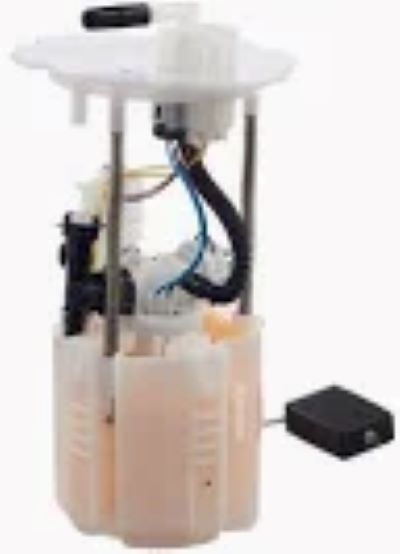Troubleshooting a Fuel Pump varies in logical steps to pinpoint if the fuel pressure has just dropped significantly over time or if it is 100% failed. So the first thing you need to do is verify — preferably without using a scan tool — that some of the more typical symptoms exist, such as hard starting. If the engine cranks and does not start, it could be possible that the Fuel Pump is not providing enough pressure (this ranges from 30 to 80 psi depending on most modern cars). If the fuel pressure is low, it could keep the engine from getting enough fuel to fire each cylinder.
For troubleshooting a Fuel Pump, nothing beats one of these dirty little tools.. a fuel pressure gauge! You can connect the gauge to the fuel rail and except it to read a specific value when you start the engine. If the pressure reading is significantly below the manufacturer’s provided levels, odds are the Fuel Pump is malfunctioning. This can easily show itself if your Fuel Pump is weak for any reason, and that tank of fuel now only yields 20 psi when it should be achieving at least 60 psi.
A next one is to note the sounds that is was making out of the fuel tank. While most electric Fuel Pumps are relatively quiet during operation, a noticeable whining or humming from inside the fuel tank is an indication of impending failure, often caused by blockage due to debris and/or resulting from short-circuits while electrical parts experience wear over time. This is generally a sign that the pump will soon fail entirely and should be checked on immediately. However, a mechanical Fuel Pump will likely leak fuel and become evident by varying inconsistent fuel delivery particularly at low engine speeds.

This could also be an electrical problem. The Fuel Pump relay and fuse must also be checked to ensure the power supply to the pump is controlled. The Fuel Pump will not get the needed electrical current to function if the relay or fuse is blown. Repairing a bad relay or fuse —– These parts are often no more than $10-$20 to replace and replacing the parts takes care of the problem without the need for anything additional.
Another very common issue is fuel filter clogging. This can lead to the Fuel Pump working harder to push fuel through, degrading efficiency and potentially causing premature failure. It is an economical maintenance of pump performance that can be done every 20,000 to 30,000 miles as costs for a filter are usually in the range of $15-$30.
Defective Fuel Pumps caused engine stalling, starting problems in over 100,000 vehicles recalled by Honda back in 2017. Such a wide-reaching recall illustrates just how crucial it is to get Fuel Pump issues fixed in a timely manner with how unsafe driving conditions can occur as the result of a failed pump.
Auto mechanic Scotty Kilmer speaks the truth when he says, "Do you want your car to last forever? Avoiding Preventative Part ReplacementThis same wisdom applies to Fuel Pumps as well, in that if you can detect a problem early on, then it will save you hundreds of dollars on repair cost and prevent you from breaking down on the side of the road.
If diagnostics indicate a bad Fuel Pump, repair may need to be performed in order to bring the vehicle back up to working order. With such regular care both the Fuel Pump and your car will benefit with a longer running life.